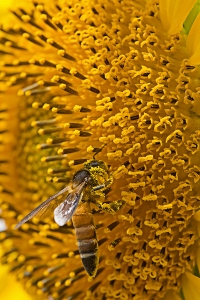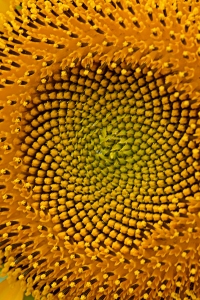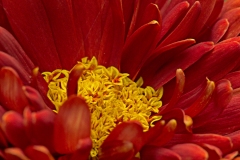She is like a gentle breeze; just before she transforms to a hurricane. She remembers every interesting anecdote; until she forgets that one name, which even Google fails to find. She hurries to Subbammana Angadi one day, or hunts for Madhubani paintings on another day. She is – my aunt.
She was back in Bangalore with lots of love and a big shopping list, with me in tow. I am not really the shopaholic, my knowledge of jewelry is limited to the less-than-Rs.100-roadside-necklaces, and my fashion sense could be Neanderthal. But, for some reason, she trusts me (bless her), and off we went in the direction of Commercial Street, Bangalore.
A friend had gifted her a tiny bottle of Attar (perfume, also known as Ittar), that of Frangipani. In Bangalore, we are more familiar with Firangi Paani, the restaurant 😉 Of course, we do know Frangipani by its other common names of Temple Tree,  Plumeria or in Kannada, Deva Kanagale (ದೇವ ಕಣಗಲೆ). Frangi pani means breaking bread. A 16th century Italian noble family that distributed bread during famine, made a Plumeria-based perfume and hence, the name. My aunt’s perfume had a mild, pleasant fragrance and she l.o.v.e.d it. Unfortunately, her friend had gifted only one bottle, and my aunt wasn’t very happy.
Plumeria or in Kannada, Deva Kanagale (ದೇವ ಕಣಗಲೆ). Frangi pani means breaking bread. A 16th century Italian noble family that distributed bread during famine, made a Plumeria-based perfume and hence, the name. My aunt’s perfume had a mild, pleasant fragrance and she l.o.v.e.d it. Unfortunately, her friend had gifted only one bottle, and my aunt wasn’t very happy.
“Why couldn’t she gift one more? I must search for it now, how frustrating!”
I thought, “Yup, people giving gifts should be more thoughtful and carry a couple of spares. What if the recipient likes it and wants more? ;)”
A daunting task had just landed in my lap. I had to help her find one. Anyway, I didn’t have to think much and mailed my good friend, Mudhassir, to find about Attar shops. He gave me more than one option, and with that list, our first pit stop was at Ajmal Perfumes, Safina Plaza. It was my first ever time at an Attar store, and this was one was fancy. Three or four friendly salesmen huddled around us.
Aunt: “Do you have Frangipani?”
The number of friendly salesmen immediately dropped to zero. We also drew blank looks until another brave guy stepped forward.
“Do you have Frangipani?”
“No Madam, what is that Madam? You have to go to Shivajinagar.” He didn’t even know what it is, but he was packing us off to Shivajinagar!
She tried a different pronunciation. “No, no, do you have Franjee paanee?”
“Oh yes, Madam, here try this.” He took out three different bottles and with a stylish flick of his wrist, applied some on ours. When both our wrists had been ‘perfumed’, he used some free space on the forearms. I enjoyed watching him in action: opening the glass bottle in his own standard manner, not one look at the globular lid and delicately applying it for sampling.
“But none of these smells like Frangipani :(”
“These are very good Madam, very good Franch perfumes.”
Aiyo, he had heard her different pronunciation of Franjee paani as French paani, and we were sampling total Firangi stuff (Firangi is foreign in Indian languages). Of course, Frangipani does have a foreign origin, in West Indies and Mexico. I described that it is a flower, grows even in Bangalore, and that he might have seen it in Cubbon Park. He did the famous Indian side-to-side nod, indicating “Nope, I haven’t” and it was time for us to leave.
We stopped at another place, Singapore Bazaar on Commercial Street. It was deserted, except for one store. The man inside beckoned enthusiastically. “How much do you want to exchange?” “Err, no exchange, we want to buy Attar.” “Oh, I only deal with foreign exchange.” Yeah, we figured that when we read the board on your shop. “You can try at Star Bazaar.” Whew, thanks for that. I didn’t want to roam around a deserted complex.
I went looking for Star Bazaar, but by then my aunt had timed out. She had to reach elsewhere, and gave up on the search. But I didn’t! I asked her driver to take us toward the Mosque near Shivajinagar bus stand. We stepped inside another Attar store. I asked her not to experiment with pronunciations and she popped the question again.
“We don’t sell water here, Madam”. (Pani, in Hindi/Urdu, means water).
It was time for me to step in. “Sir, it’s a flower. Let me show you a picture.” My smartphone pulled out some images. I was kicking myself that I hadn’t carried Karthik’s pocket guide, “Discover Avenue Trees” – it would have been so much easier. The shopkeeper stared into the images and pulled out a couple of tiny bottles. Yet again, with style and sophistication, he applied Attar on the remaining free spaces available on our forearms. It worked! My aunt found her Frangipani, finally, and I thank Mudhassir for his help. She is a proud owner of these itardans (tiny crystal cut bottles).

Itardans, the ones from Shivajinagar and the ‘gift’ that led us to these [image courtesy: Sudarshan]
 You can’t miss this tree, which is used quite commonly for landscaping. There are many species and hybrids of Plumeria. The dark green leaves differ in each species; narrow, rounded, corrugated, pointed, or even spoon-shaped. The Frangipani tree bears white flowers (looking like egg yolk), or red ones, or even a mix of white and a dash of red, like the one below.
You can’t miss this tree, which is used quite commonly for landscaping. There are many species and hybrids of Plumeria. The dark green leaves differ in each species; narrow, rounded, corrugated, pointed, or even spoon-shaped. The Frangipani tree bears white flowers (looking like egg yolk), or red ones, or even a mix of white and a dash of red, like the one below.
When I go walking or running in Cubbon Park, there are days when the downwind brings a whiff of fragrance. I know I am nearing a Frangipani. After this day of ‘Attar’ confusion, I have fallen for this tree. On a recent trip to Bandipur National Park, I couldn’t help but smile at the mighty Frangipani, decorating the path in full bloom.


















